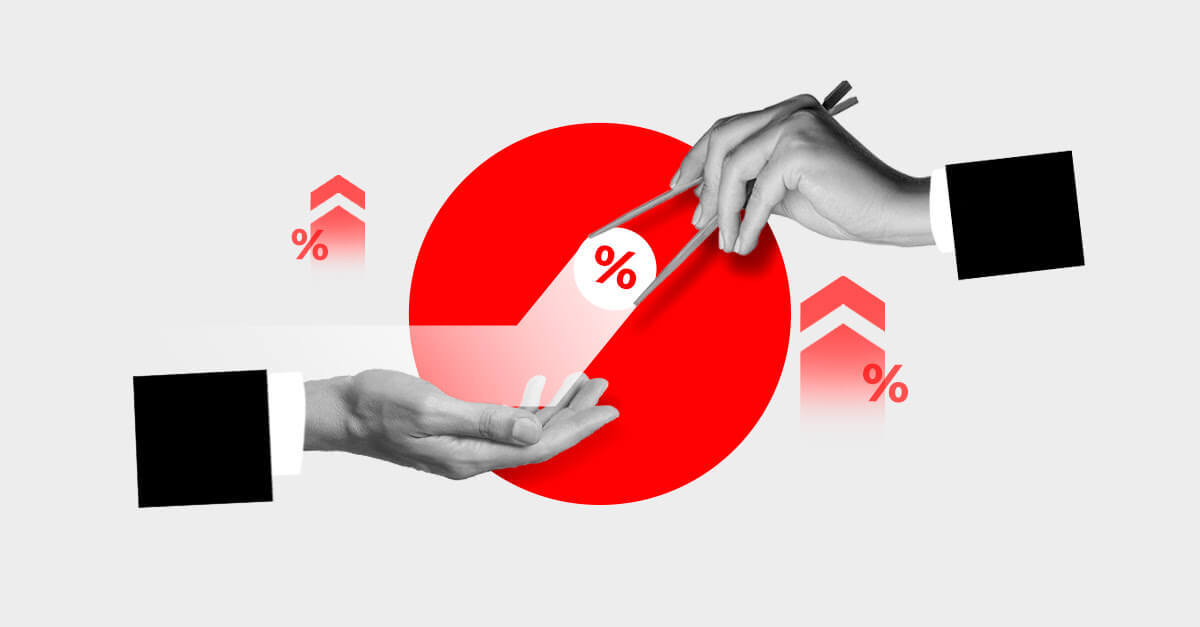The threat is scarier than its implementation. This saying perfectly encapsulates the current stock market situation, especially in the context of concerns about, among other things, a possible recession in the United States. When negative news is superimposed on the financial markets, a sudden collapse such as we witnessed during Monday's session could occur. At its peak, the Nasdaq 100 index fell by 5.4 per cent, reaching 15.8 per cent below its previous highs. Japan's Nikkei 225 index lost 13.3 per cent in a single session, wiping out a full year's worth of gains. However, the situation is beginning to stabilise. The Nasdaq 100 has recovered 3.6 per cent and the Nikkei 225 12.6 per cent from its low. What factors could have caused the panic and are the stock markets really back to normal yet?
Table of contents:
- Will we have a recession in the United States?
- Is this the end of the Carry Trade strategy?
- Is this the start of a market downturn?
Will we have a recession in the United States?

Source: Conotoxia MT5, US100, Daily
Investors' reactions to news of a possible imminent recession in the US, the Fed's overdue response and the Bank of Japan's move away from its zero interest rate policy were the main factors behind the declines, which significantly strengthened the yen and negatively impacted the profitability of Japanese exporters. The probability of an interest rate cut by the Fed at its September meeting rose to 100 per cent, pushing 10-year US bond yields down to their lowest level in more than a year.

Source: Tradingview
The Fed is facing a choice of the lesser of two evils, balancing the risk of a return to inflation with the threat of recession, which has altered previous interest rate expectations. After 'Black Monday', the market expects the Fed to cut interest rates by as much as 50 basis points at its September meeting, and by 25 basis points at each subsequent meeting. Only a month ago, such a scenario seemed almost unthinkable to most analysts.

Source: CMEGroup, FedWatch
However, if we look at the data that caused concern in the US market, we see that the unemployment rate rose from 4.1 per cent to 4.3 per cent, which is still below the multi-year average. Another negative surprise was the reading of the US manufacturing leading indicator, the so-called ISM, which came in at 46.8 points, compared to the expected 48.8 points (values below 50 indicate an expected slowdown and above 50 an expansion). In contrast, the ISM index for non-industrial sectors indicated expected expansion and stood at 51.4 points. It is also difficult to speak of a recession when economic growth in the second quarter of this year was 2.8 per cent. To conclude that a recession has begun, we must wait for more data from the economy. However, the market always tries to price the future, hence the proverb "the threat is scarier than its execution" is confirmed.
Is this the end of the Carry Trade strategy?
Increasingly, we may hear that the current rise in interest rates in Japan has just led to the end of the very popular Carry Trade strategy among hedge funds and financial institutions. This involves borrowing in a currency with a low interest rate and investing those funds in another currency in an asset that yields a higher rate of return. Borrowing in Japan (interest rates below 0.5 per cent) to buy US bonds (interest rates above 5 per cent) with the yen received was particularly popular. In this way, exposing themselves mainly to currency risk, the funds made money without much contribution. However, when interest rates rose and the Japanese yen strengthened, this strategy resulted in large losses, as the USD/JPY exchange rate fell by 12 per cent in a month. This forced the funds to close their losing positions and cover their losses, triggering a discount in most markets.

Source: Conotoxia MT5, USDJPY, Daily
Despite the appreciation of the yen, real interest rates in Japan are still negative. After the latest increase, the nominal rate is 0.25 per cent, while inflation remains at 2.8 per cent. In comparison, real interest rates in the United States are clearly positive, with a nominal rate of 5.5 per cent and inflation at 3 per cent. This means that the US dollar has most of the theoretical factors for further appreciation against the yen, and the Carry Trade strategy still remains profitable.
The appreciation of the yen has particularly negatively affected the profits of Japanese exporters, which have a significant weighting in the country's indices. The Nikkei 225 index has lost all of this year's gains. It appears that future USD/JPY movements may largely influence the ups or downs of this index in the coming months.

Source: Conotoxia MT5, JP225, Daily
Is this the start of a market downturn?
At present, it is difficult to talk about the start of a bear market or the continuation of declines in the main indices, given the still good economic situation. When investing, we must remember that unpredictable 'black swans' can happen, so it is important to make rational decisions so as not to succumb to FOMO. When a sell-off spills over into all markets, even those unrelated to the news in question, we should try to use these situations to our advantage whenever possible.
Grzegorz Dróżdż, CAI MPW, Market Analyst of Conotoxia Ltd. (Conotoxia investment service)
The above trade publication does not constitute an investment recommendation or information recommending or suggesting an investment strategy within the meaning of Regulation (EU) No. 596/2014 of April 16, 2014. It has been prepared for informational purposes and should not form the basis for investment decisions. Neither the author of the publication nor Conotoxia Ltd. shall be liable for investment decisions made on the basis of the information contained herein. Copying or reproducing this publication without written permission from Conotoxia Ltd. is prohibited. Past performance is not a reliable indicator of future results.
CFDs are complex instruments and come with a high risk of losing money rapidly due to leverage. 79,03% of retail investor accounts lose money when trading CFDs with this provider. You should consider whether you understand how CFDs work and whether you can afford to take the high risk of losing your money.







